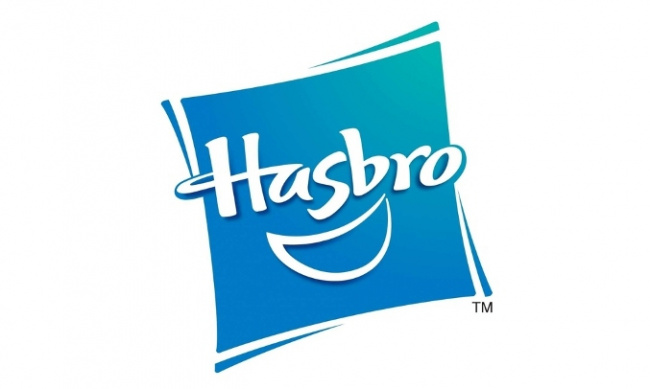The recent Free Comic Book Day started us thinking about the different ways in which comic retailers interact with their communities to create a positive impression of comics. Those interactions can take many forms, depending on the store, what it stocks, and the community in which it's located, but we set out to find out the common threads between stores. To do that, we interviewed four retailers, with seven stores between them, in different areas of the country, with different customer bases and different product lines. All of them have been in business for over ten years and have strong ties to their communities.
One of the issues that we wanted to explore in some depth was how retailers maintain good relationships with the community while carrying a wide variety of titles, some appropriate for all ages and some not. We got pretty consistent answers between all of the retailers despite the fact that the product lines range from no adults-only products to an extensive selection of them, depending on the retailer and the community.
The four retailers we talked to were Michael Tierney, who has been in business for over 20 years and has two stores in the Little Rock, Arkansas area; Mimi Cruz, who has been in business for over 15 years and has two stores in Salt Lake City, Utah; Adam Freeman, who been in business for over 12 years in Newhall, California; and Lee Hester of Lee's Comics, who has been in business for over 20 years in the San Francisco Bay area. At the end of this article you'll find links to the complete interviews with this 'brain trust' of quality retailers.
Good Retailers Never Rest
When we contacted these retailers for interviews, we knew simply that they had been around for substantial periods of time, actively promoted their stores, and maintained a high public profile. We quickly understood why they had such high profiles -- they never stopped working on promoting comics and their stores. As Hester put it, 'Since I have made my living selling comics for all my adult life, I try to promote comics every chance I get.' In store interactions, in relationships with community institutions, in outreach to the press, in charitable activities, these retailers project a positive impression of comics and of their stores at every opportunity. It's this relentless focus on a positive message that has made them successful in their communities.
Comics as Literacy Tools -- Schools and Libraries
All of these retailers work hard at creating and maintaining strong ties to local institutions; all of them mentioned schools and libraries as places where they did charity and outreach efforts. As Freeman put it, 'In general, we have found that if we spend our efforts promoting comics in the community (rather than the store), we benefit much more. There are a lot of people out there competing for attention by screaming 'give us your money!' If we are out there screaming 'read comics!' it's just different enough to cut through the noise.'
Interactions with libraries included free comic giveaways, using libraries to promote the free comics given away at stores, library displays, speaking at libraries on ways to get kids to read, educating librarians on graphic novels, and selling them graphic novels for their library collections.
Tierney stressed pushing the message that comics help learning in the store as well as through outreach efforts. 'Whenever a child is picking up a big stack of comics, I'll comment to the parent about their child probably does well in school,' he said.
Comics for Charity
All of these retailers give away comics to local charities, including school fundraisers, organizations that focus on children's welfare, and libraries. These not only engender good will, they also create an opportunity to create a new comic reader out of someone that gets a comic for the first time through one of these events. Cruz also is involved in supporting a University of Utah student Unbroken Trust group, a charity focused on child advocacy. This type of charitable connection goes beyond promoting comics to positioning the store and the retailer as good citizens of the community with a concern for improving the lives of those with fewer advantages.
'Mature' and Adult Merchandise
All of the retailers we interviewed handled some merchandise not appropriate for younger readers; each had an individual approach to what was appropriate for their communities. Three of the four carried 'mature' merchandise but not adults-only products; Lee's Comics handles the full range of products, including an extensive adults-only section. They use different methods to direct younger customers toward age-appropriate merchandise. Lee's has a rack of all-ages merchandise near the front door and a separate area to which only adults are admitted. But the rest of the merchandise is integrated on the store floor. 'I think of Lee's Comics as a book store; therefore, I do not segregate mature material,' he said. Tierney bags and tapes mature titles to deter browsing by younger readers and make them easily identifiable at checkout, but integrates those titles into his stock. Although Cruz racks some titles separately, she notes that the look of mature titles is rarely appealing to younger readers. Freeman segregates mature content far from all-ages merchandise and directs kids that wander into the wrong areas into a section of the store where they're more likely to find something appropriate.
Several retailers stressed that it was impossible to predict what titles parents would find objectionable for their children. Language, nudity, and violence were all areas of concern for some parents and not for others. Allowing parents to decide for themselves what was right for their kids by pointing out potential areas of concern in their children's selections made the retailer an ally of the parent and was a key strategy mentioned for maintaining positive relationships. As Freeman put it, 'When a mom is warned at the counter that the comic that she is buying for her son has material that some would find offensive, she is less likely to demonize you into someone who is trying to corrupt her kids.'
Complaints About Content
The pre-emptive strategies above eliminated all but a few complaints about content. Tierney had to go back to Howard the Duck (which a local minister had tied to Satan worship) to recall an incident. Cruz said that she recently had a patron object to the contents of Sojourn #22 and Thunderbolts #78, saying the titles were 'too suggestive' to be displayed within the reach of children. She offered alternatives, of which the customer purchased four. This strategy of indicating that there are a wide variety of titles for different patrons was also mentioned by Freeman, who said, '[W]e explain that while there are comics for everyone, not every comic is [for everyone].'
Every retailer mentioned listening to the concern and talking openly with the customer. While that alleviates many concerns, there are times when it doesn't. 'Ultimately, it is my choice what titles to carry in my bookstore,' Hester said, 'and the customer can choose to shop elsewhere if that offends them.'
Mature Comics on Free Comic Book Day
We also asked retailers how they handled mature titles on Free Comic Book Day. Here there was a broad range of strategies. Tierney didn't offer mature titles in his display. 'For us, they're basically useless,' he said. 'I'm not making a special section, or going to tell a child that he can't have a certain free book. That would be a negative experience.' Cruz emphasized all-ages books in her stores as well, mentioning the DC books as a good fit for her clientele.
Freeman and Hester both had store personnel recommending freebies to customers, allowing them to steer them toward the appropriate titles. Hester stressed putting the decision in the hands of the parents. 'As a parent, I feel that it's ultimately the parent's responsibility to monitor what their children read and watch,' he said. 'I do not let my 7-year-old twin girls watch the evening news..., but I would not suggest banning it from the airwaves.'
Hopefully the strategies described above will be useful both to retailers just starting out and those of greater experience that are looking to improve their community relations. And although these lessons are drawn from comic retailers, they can be applied by retailers in any category, since there are products directed toward older consumers in anime, in toys, in movie/TV merchandise, and in games.
'Interview with Mimi Cruz of Night Flight on Good Community Relations'
'Interview with Lee Hester of Lee's Comics on Good Community Relations'
'Interview with Adam Freeman of Brave New World on Good Community Relations'







